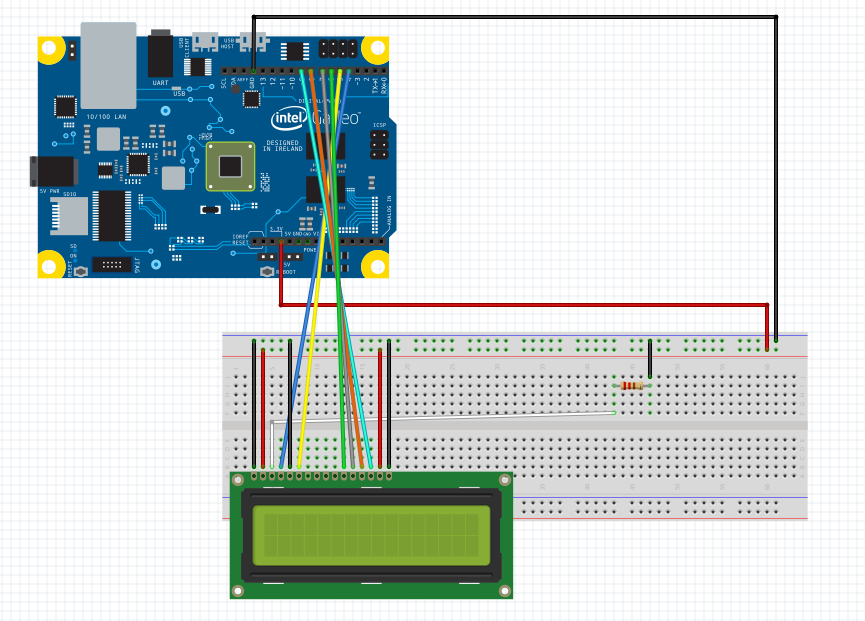16x2 LCD
Learn how to use the 16x2 LCD shield with the Arduino Liquid Crystal Library.
Required Components
- 16x2 LCD
- a resistor that provides your desired contrast (look at your LCD’s spec sheet)
Hooking up Components
If you are using the 16x2 LCD listed above, follow the diagram below:

Create a new project
- Create a new project from the template.
- Go to Arduino’s Liquid Crystal Library GitHub and download the LiquidCrystal.cpp and LiquidCrystal.h files.
- Place the LiquidCrystal.cpp and LiquidCrystal.h files in your new project’s folder via Windows Explorer
- Based on your 16x2 LCD you may need to specify other pins for use with the LiquidCrystal library.
- Replace the existing code in stdafx.h and main.cpp with the following code:
Code
stdafx.h
// stdafx.h : include file for standard system include files,
// or project specific include files that are used frequently, but
// are changed infrequently
//
#pragma once
#include "targetver.h"
#include <stdio.h>
#include <tchar.h>
#include "arduino.h"
#include "LiquidCrystal.h" // we need this library for the LCD commandsMain.cpp
// Main.cpp : Defines the entry point for the console application.
//
#include "stdafx.h"
int RS = 4;
int ENABLE = 5;
int D0 = 6;
int D1 = 7;
int D2 = 8;
int D3 = 9;
LiquidCrystal lcd = LiquidCrystal(RS, ENABLE, D0, D1, D2, D3); // define our LCD and which pins to use
int _tmain(int argc, _TCHAR* argv [])
{
return RunArduinoSketch();
}
void setup()
{
Log(L"LCD Sample\n");
lcd.begin(16, 2); // need to specify how many columns and rows are in the LCD unit (it calls clear at the end of begin)
lcd.setCursor(0, 0);
lcd.print("Hello!");
lcd.setCursor(0, 1);
lcd.print(3.14159, 4); // prints a double, the 2nd number is the digits to print after the .
}
void loop()
{
}